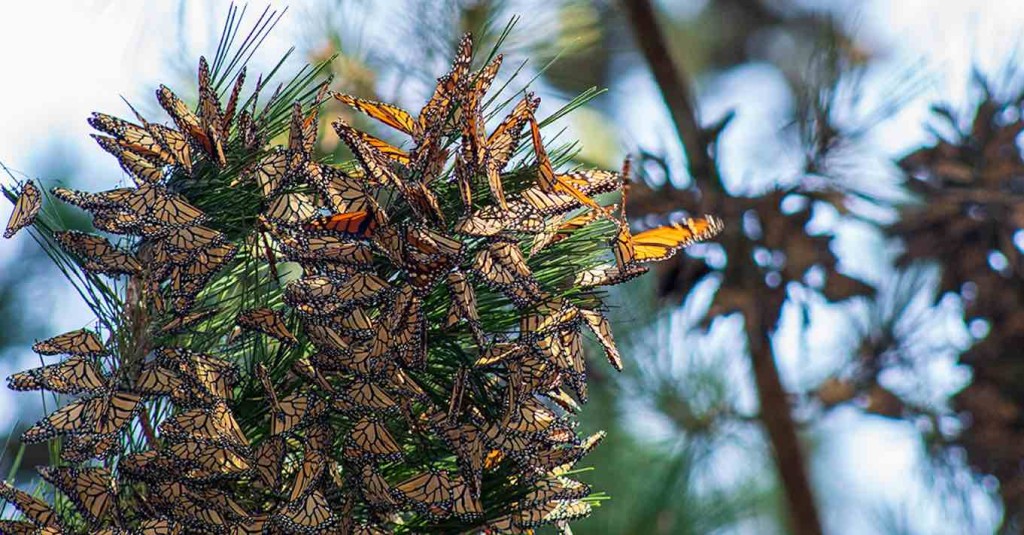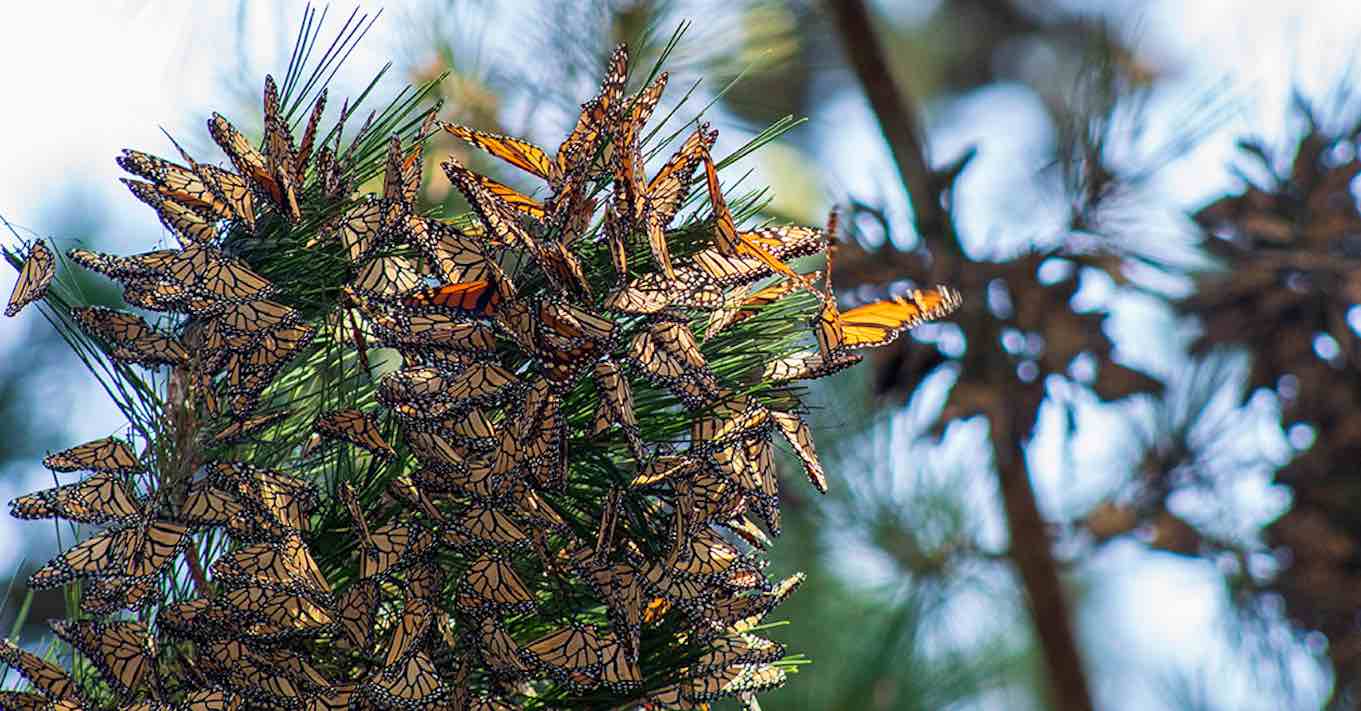
The annual Western monarch count to measure the population of overwintering butterflies shared fantastic news for the second year in a row.
Motivated by the surprising rebound in 2021, volunteers’ excitement continued to grow when early reports hinted at a consecutive year of improved numbers.
Surveying a total of 272 overwintering sites across coastal California in November and December—along with a few sites inside California and Arizona—volunteers tallied 335,479 individual monarchs.
Over 130,000 butterflies were reported in Santa Barbara and San Luis Obispo Counties alone. The San Francisco Bay Area also witnessed a comeback from last year with more than 8,000 butterflies reported in surrounding counties.
This season’s results are a welcome reprieve from the dismal total of less than 2,000 individuals counted in 2020—and larger than the 250,000 counted last year.
335,479 is squarely back into what was considered “normal” in 2000-2017.
“We can all celebrate this tally,” says Emma Pelton, a conservation biologist at the Xerces Society which leads the western monarch count. “A second year in a row of relatively good numbers gives us hope.”

That said, the storms that hit California after the count will certainly effect the total. At some sites, butterflies were blown out of their clusters, making them more vulnerable to cold, but other sites, like Pacific Grove, fared relatively well with the majority of monarchs still holding on.
RELATED IN OREGON: Efforts to Save Endangered Blue Butterfly Quadruples its Population–but Also Saves a Lupine from Extinction
Managing groves to be more resilient to climate change and severe weather may help improve monarch survival and ensure there is habitat long into the future. This can include replacing dead and dying trees, mitigating future flooding, and planting more native nectar sources.
All the small but collectively powerful efforts to re-wild and protect our landscapes for monarchs are producing results. Consider joining the monarch-boosting mission of the Xerces Society.
Here are five actions you can take to support monarch butterflies:
- Plant native milkweed.
- Plant a diversity of nectar plants, ideally native to your area.
- Stop using pesticides, or minimize risk associated with pesticide use.
- Call on legislators to support greatly needed policies such as Recovering America’s Wildlife Act and the Monarch Action, Recovery, and Conservation of Habitat Act.
- Contribute to community science projects that track monarchs, such as the Western Monarch Milkweed Mapper, Western Monarch Mystery Challenge, and nationwide Integrated Monarch Monitoring Program.
(Scroll down here to see links for these items.)
FLY This Great News to Butterfly Lovers on Social Media…




















